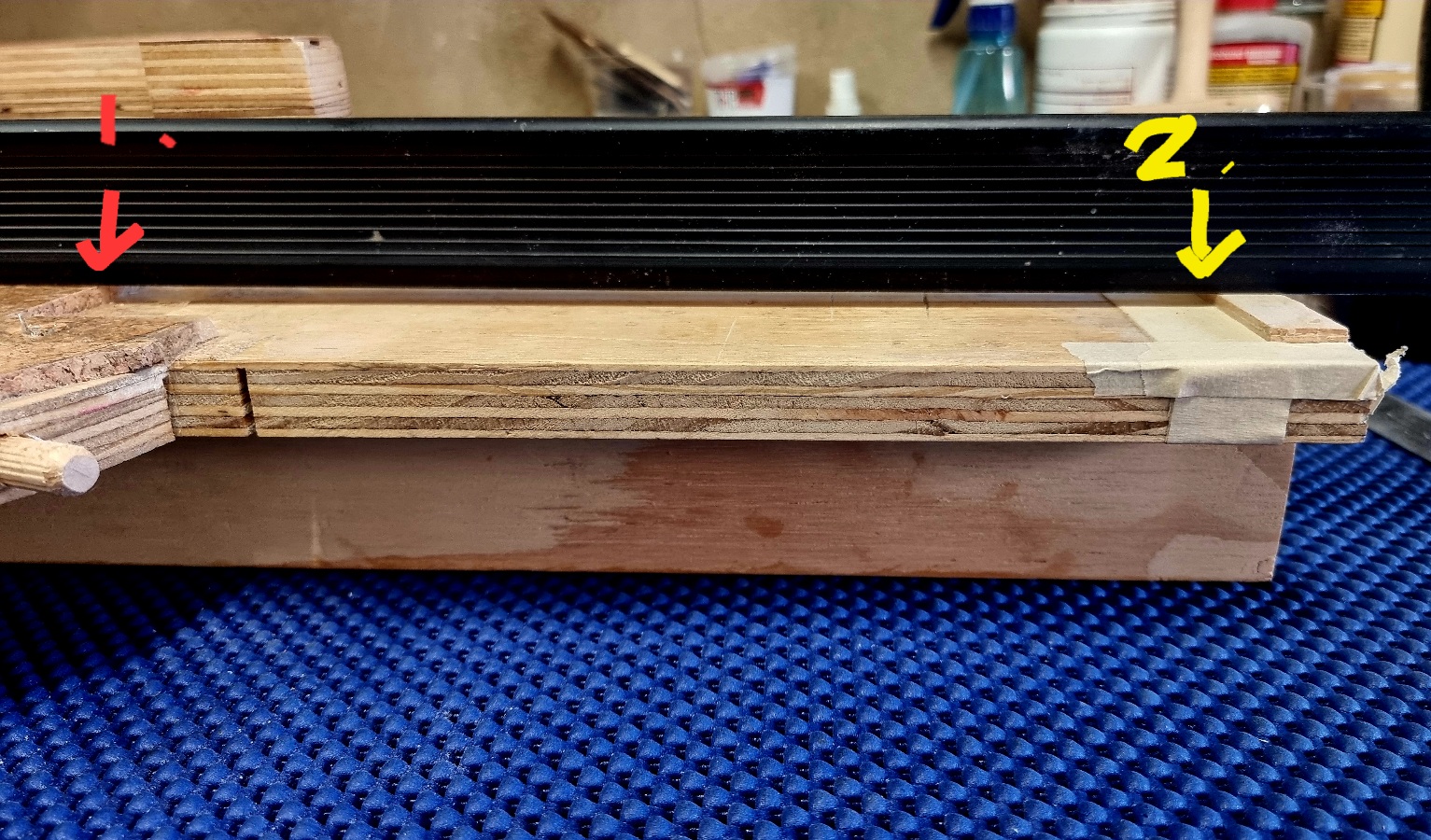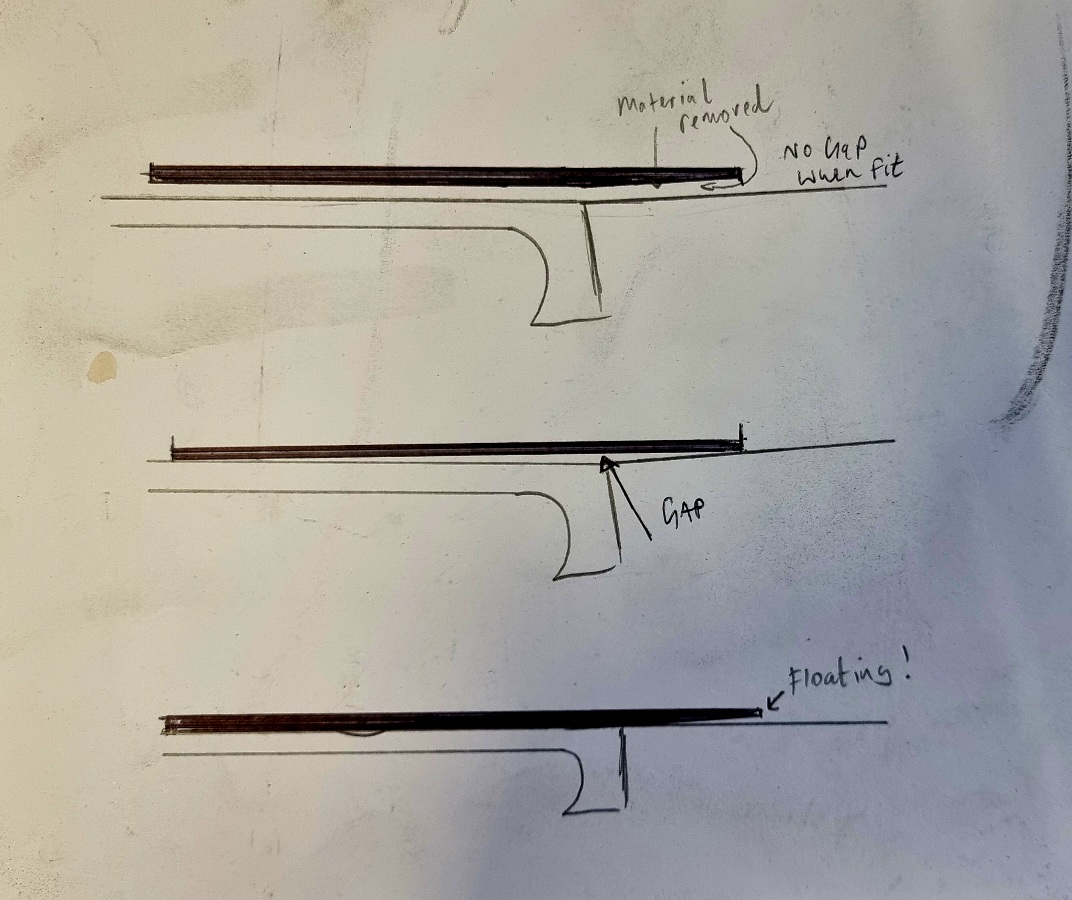|
RobF -> RE: Finger board thickness (Aug. 2 2022 23:15:09)
|
Hi Stu,
Regardless of what’s expected from the workboard setup, the fingerboard should be fitted to the guitar as it exists, rather than to the theoretical. If you can’t see a gap or angle then there’s no point in attempting to adjust for one. I mean, how can the adjustment amount even be determined if it can’t be seen? If it appears to fit, then it probably does, lol.
I think it might be safest to stop pursuing this, re-flatten the bottom of the fingerboard and thickness it to a touch more than 6.5mm*, with the idea that the fingerboard surface planing can take care of any deviations in neck angle from expected. A workboard with a cork based perimeter does have some give, so maybe that’s part of what’s going on. Workboards, in general, can have their own idiosyncrasies and each one often needs a bit of tuning to get it where you want it to be. In your case, having a shim at the nut end gives a lot of flexibility to adjust things once you get them figured out.
I’d be concerned that you might run out of fingerboard depth to play with if you keep chasing this angle adjustment thingy-poo.
* hopefully the fingerboard is still thick enough at the soundhole end to be flattened. If adding the ramp has thinned it down too much then it might still be salvageable by planing the bottom flat, but in a wedge shape going thicker towards the nut, kind of like how you started out. The concern is if the entire board is flattened to the soundhole end’s thickness it might then be a too thin to work with when planing the surface to hit the bridge at the right height. Also, if the neck has no offset (or very small) then then fingerboard will naturally take on a wedge shape when planing the surface during prep, so it’s ok to start out that way.
|
|
|
|


